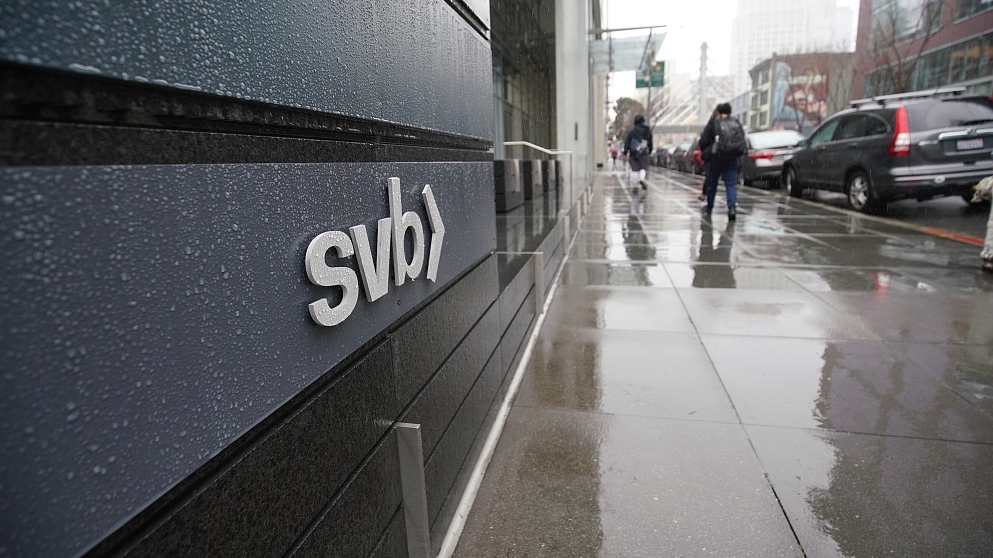
The failure of Silicon Valley bank is an isolated case, which will not have a great impact on the market itself, but it does reveal the risks contained in the current global financial system. /CFP
The failure of Silicon Valley bank is an isolated case, which will not have a great impact on the market itself, but it does reveal the risks contained in the current global financial system. /CFP
Editor's note: Yuan Lei is the deputy director of Institute of Economics, China Academy of social science. The article reflects the author's opinions and not necessarily the views of CGTN.
The fundamental driving force of economic growth lies in innovation, and the coupling of productivity and financial capital is fundamental to its promotion. Many problems in the current financial system can be solved through innovation.
On March 10, 2023, Silicon Valley Bank, or the SVB, the 16th largest bank in the United States, was forced to shut down due to a run. This is the second largest bank failure in the history of the United States, after Washington Mutual, which collapsed in the 2008 financial crisis. On the surface, this was due to SVB's own operational mistakes. The main reason for the bank's failure was its unreasonable asset structure. Abundant liquidity led to an excessive allocation of assets to fixed income securities. Under the influence of the Federal Reserve's continuous interest rate increases and balance sheet contractions, the total flow of customer funds turned from positive to negative, resulting in liquidity tension. The bank had to sell bonds and issue new shares to maintain liquidity, which led to a run by depositors.
But in essence, this reflects the difficulties faced by high-tech companies worldwide. SVB is not a bank for ordinary people or enterprises, but a bank for high-tech start-ups and the venture capital behind them. If these high-tech enterprises develop rapidly with continuous expansion of their scale of production, it will inevitably lead to increased loan demand and expansion of deposit scale. Fundamentally, the SVB collapse is the result of a lack of innovation seen in some high-tech enterprises. Many high-tech start-ups are acquired before they are fully developed, as entrepreneurs tend to focus on market development rather than making profit. The new phase of scientific and technological revolution is the continuation of the information revolution, but the breadth and depth of its impact are far less than the previous two industrial revolutions.
With global innovation too weak to form effective support for economic growth, the Federal Reserve first released a large amount of liquidity into the system and then rapidly raised interest rates. For the United States, the interest rate hike supported the stabilization of the inflation rate, the return of capital and the appreciation of the dollar, but it has also aggravated the volatility and fragility of the U.S. financial market and caused chaos in the global financial market. The assets held by SVB are relatively high quality and there is no big problem with the bank's robustness. However, the Federal Reserve's interest rate increase exposed its structural imbalances, with serious consequences.
The failure of Silicon Valley bank is an isolated case, which will not have a great impact on the market itself, but it does reveal the risks contained in the current global financial system. First, do other U.S. financial institutions have similar structural problems, and is there a second or third Silicon Valley Bank? Second, after the U.S. rate hike, will the major developed economies follow the United States into an interest rate increase cycle? Will there be new and greater risks in the context of global liquidity tightening? Third, the U.S. interest rate increase will have a negative impact on the global economic recovery. Will this trigger a chain reaction, leading to a continued global recession? The answer to these questions lies in innovation. Because real growth through innovation is the fundamental solution to financial risks.